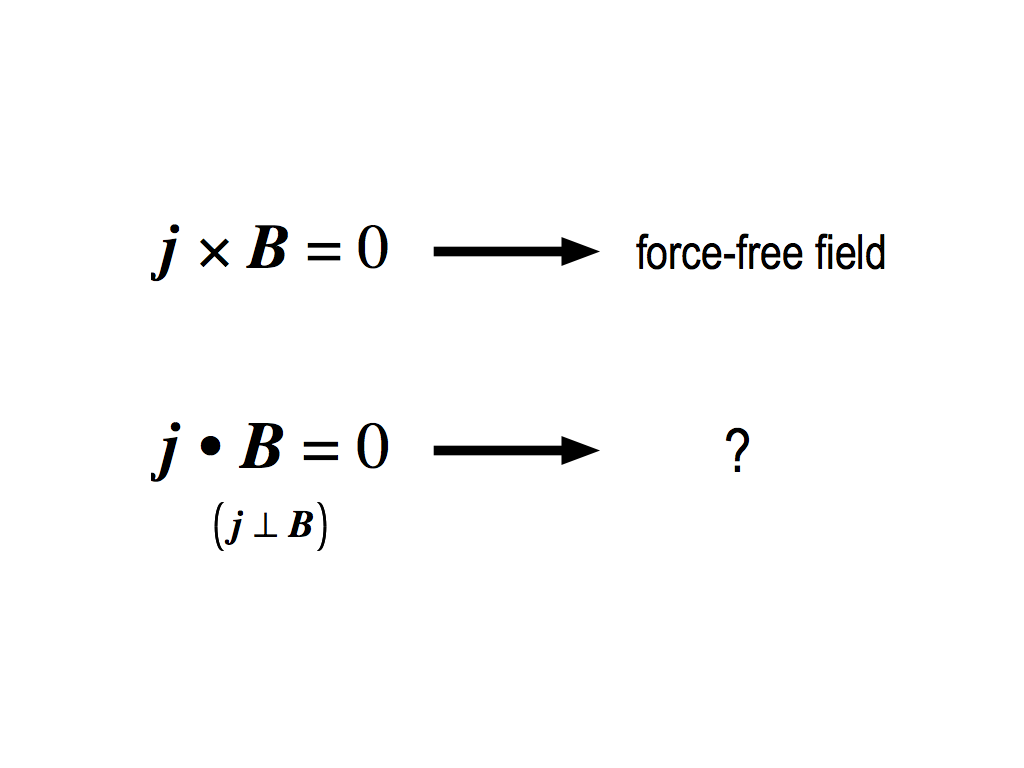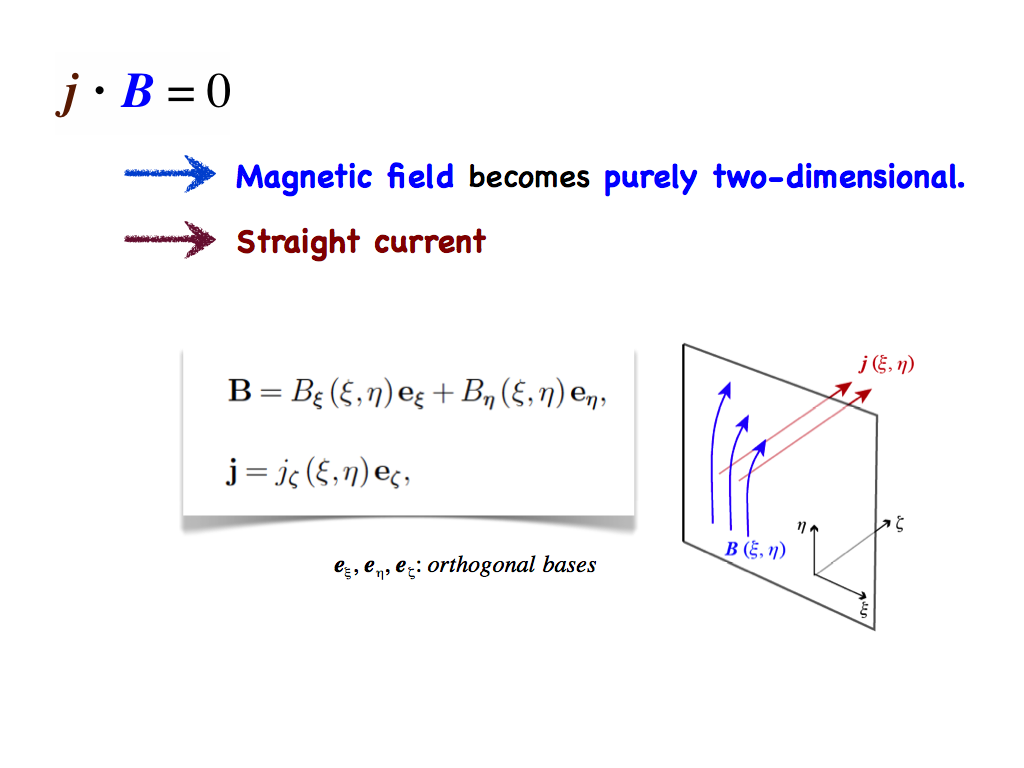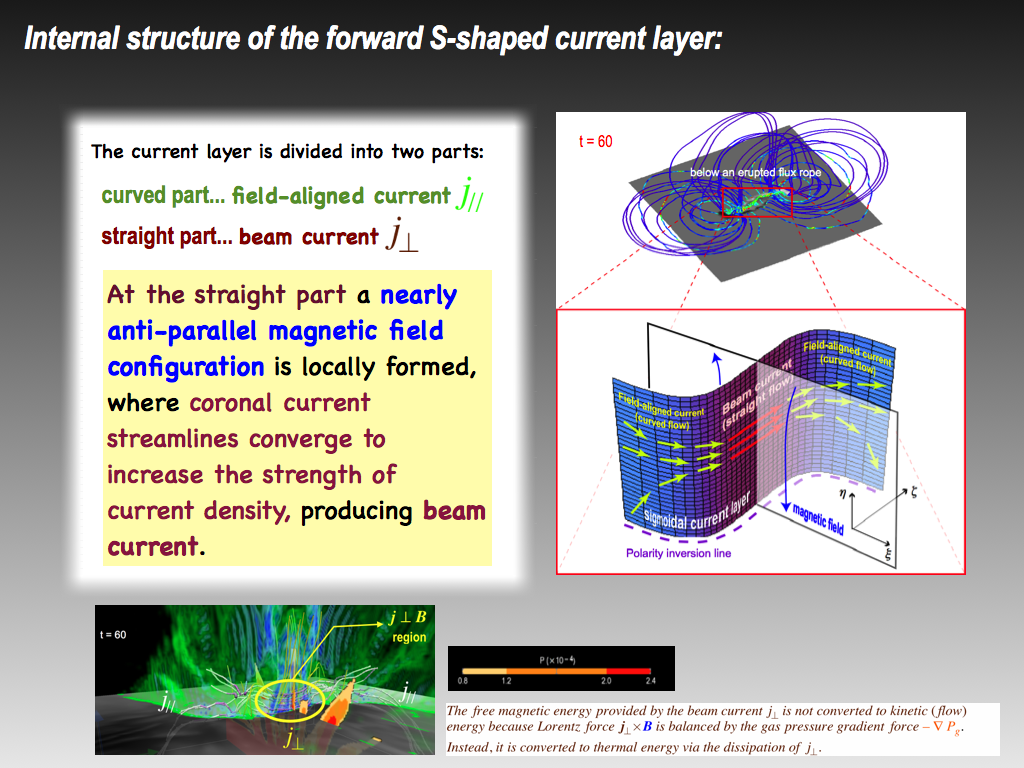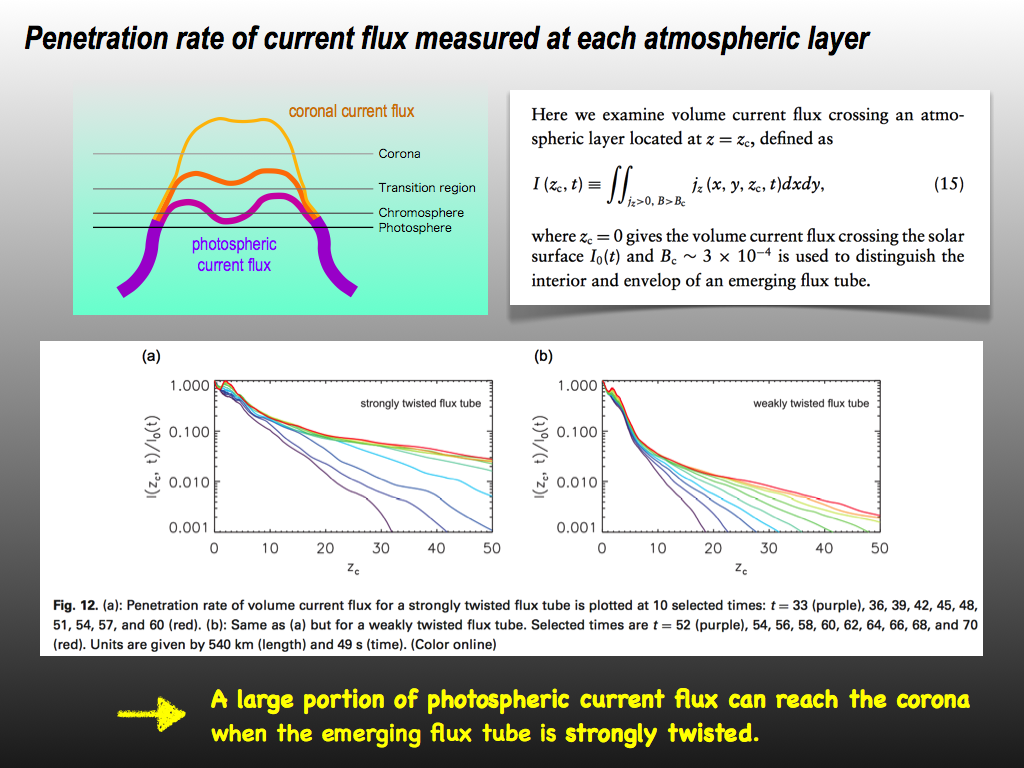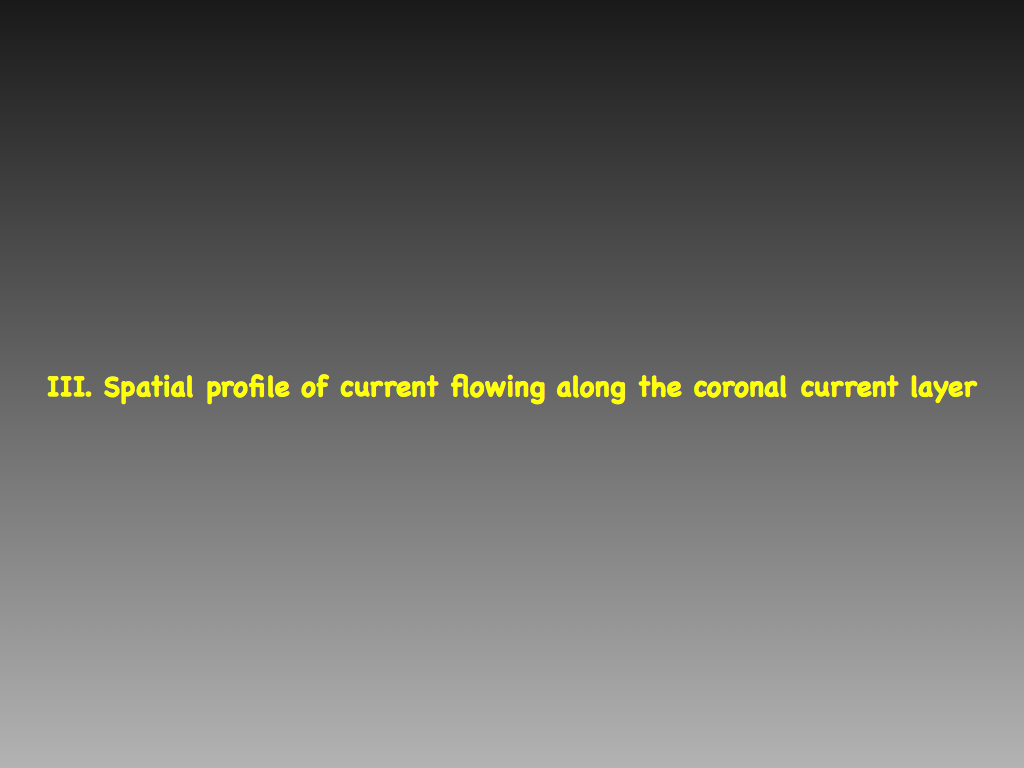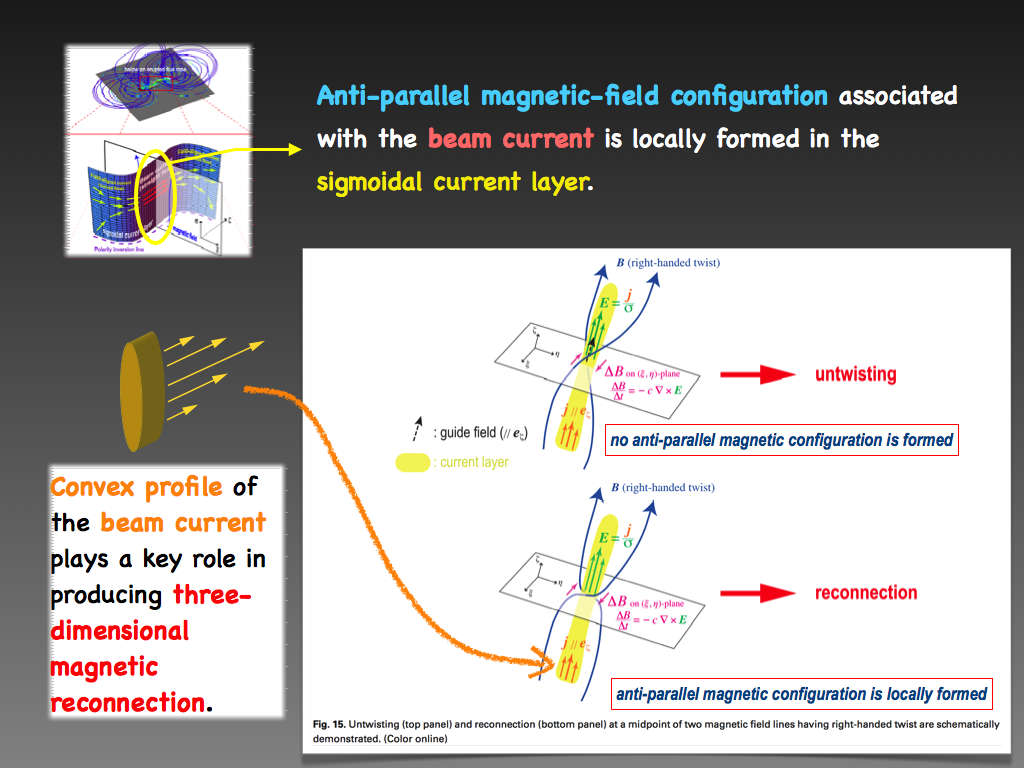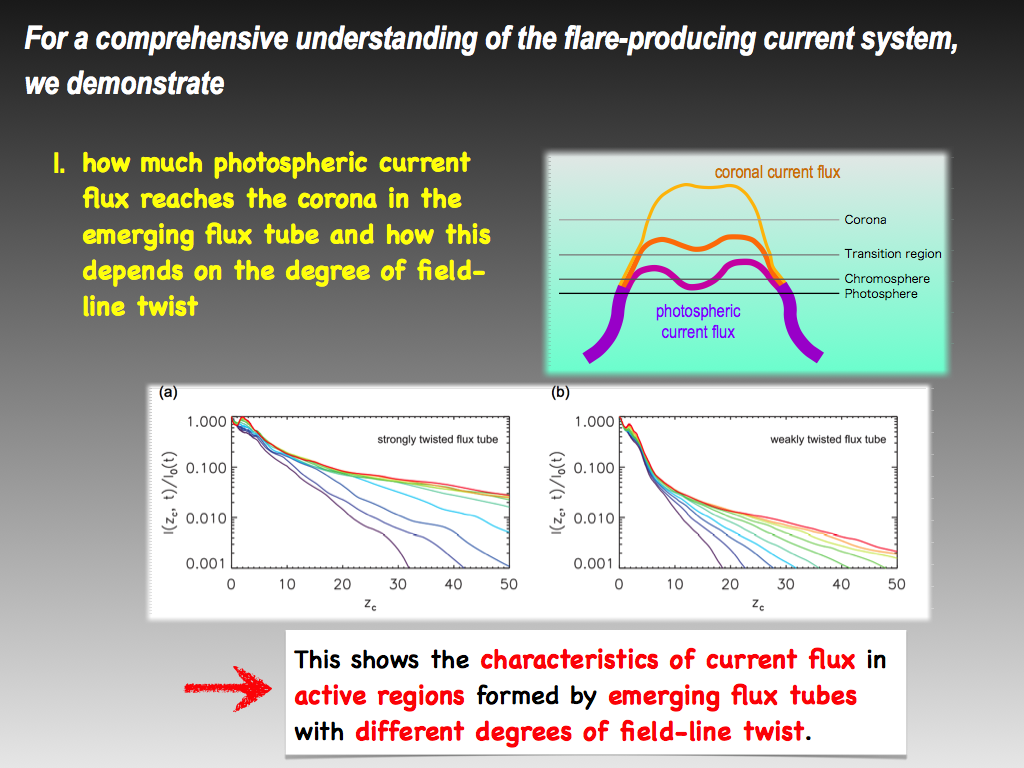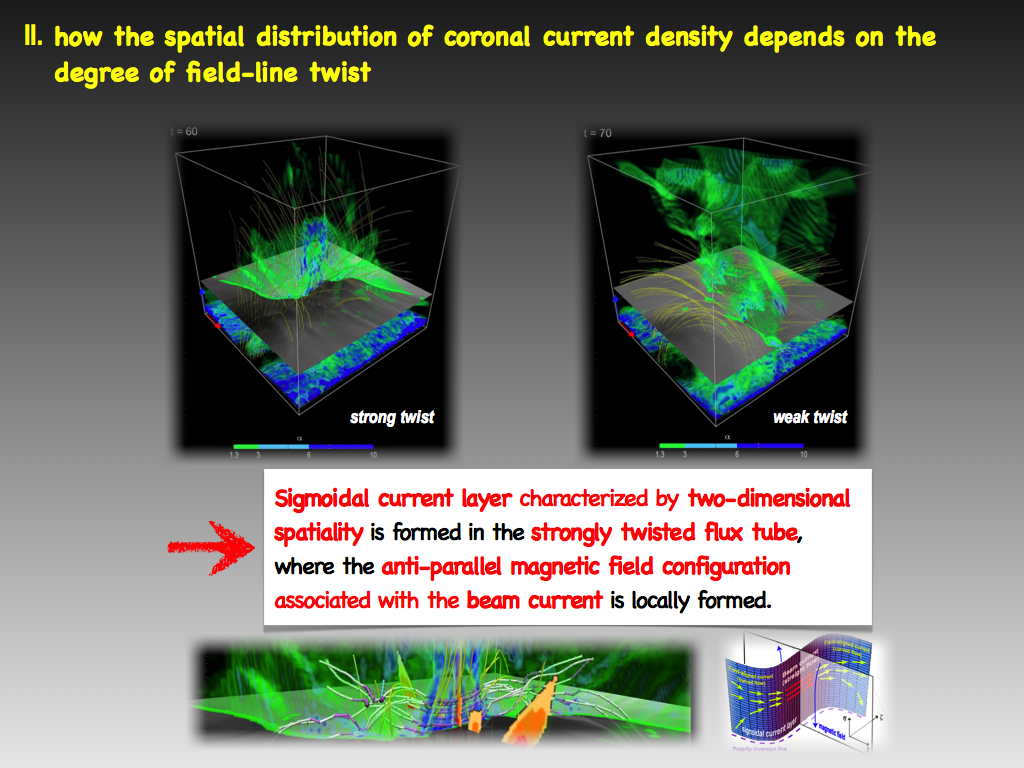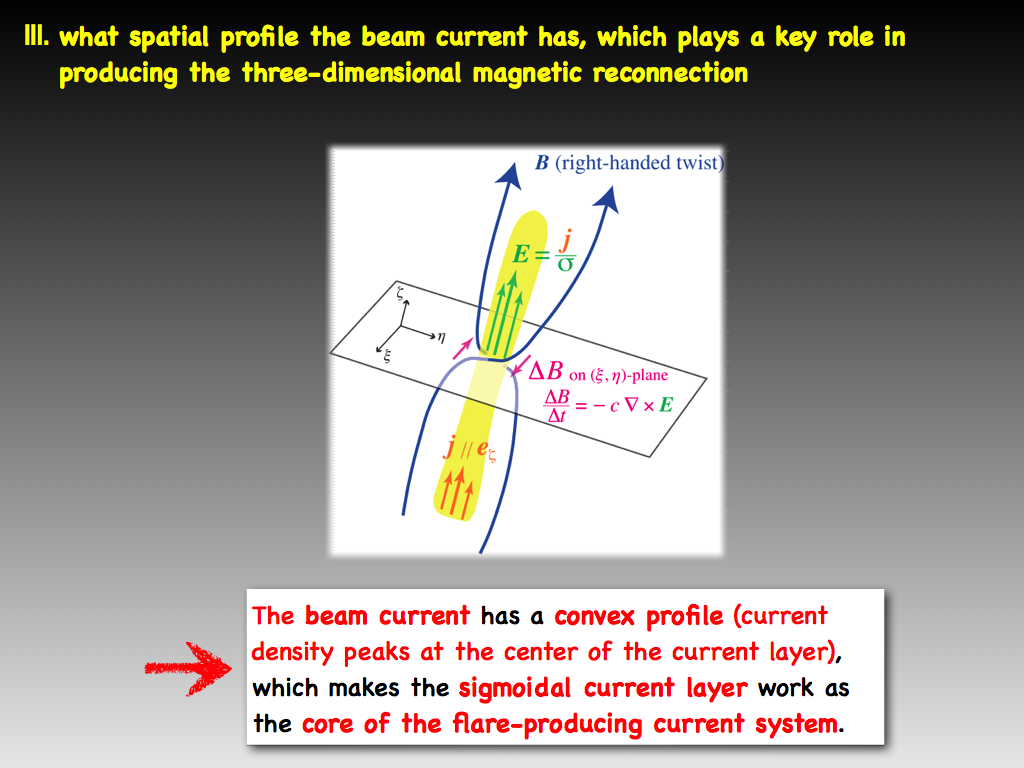Structural properties of solar flare-producing coronal current system developed in
emerging magnetic flux tube
The coronal activity of a magnetic structure on the Sun depends on what coronal current system is developed in the structure, which determines how a coronal current
flows inside it. To investigate structural properties of the coronal current system
responsible for producing a solar flare, we performed a pair of magnetohydrodynamic simulations
of an emerging flux tube, where the flux tube was composed of strongly twisted field lines in one simulation (ST case) while weakly twisted field lines in the other (WT case). By quantitatively examining the configuration of coronal current streamlines and conducting a fractal dimensional analysis of the spatial distribution of coronal current density, we demonstrated that
the flare-producing current system relied on a specific coronal current structure characterized by two-dimensional spatiality (current layer or 3D current sheet) where magnetic field has a nearly anti-parallel configuration in a portion of the structure (APMC portion). Spatial profile of the coronal current passing through the APMC portion may be a key factor in three-dimensional magnetic reconnection, a possible mechanism for producing the flare.
We also demonstrated how the degree of field-line twist affected the structural properties of the flare-producing current system by evaluating how much photospheric current flux reached the corona in the ST and WT cases.
Reference
Magara, T.
Publication of Astronomical Society of Japan, 69, 5
PDF version
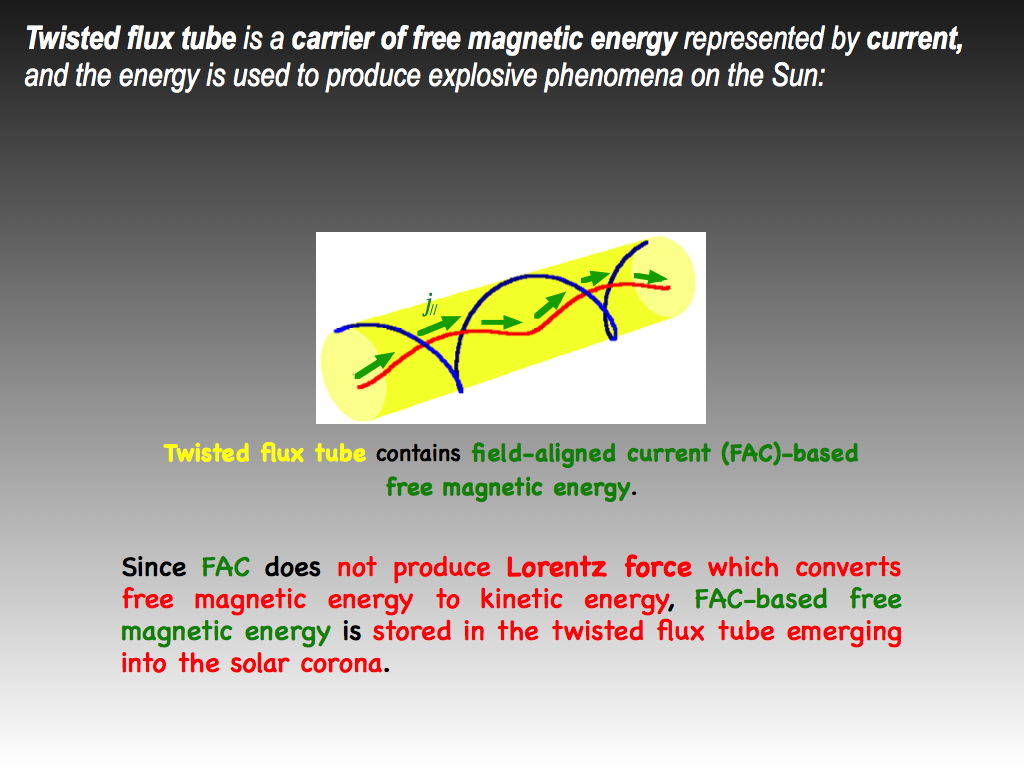
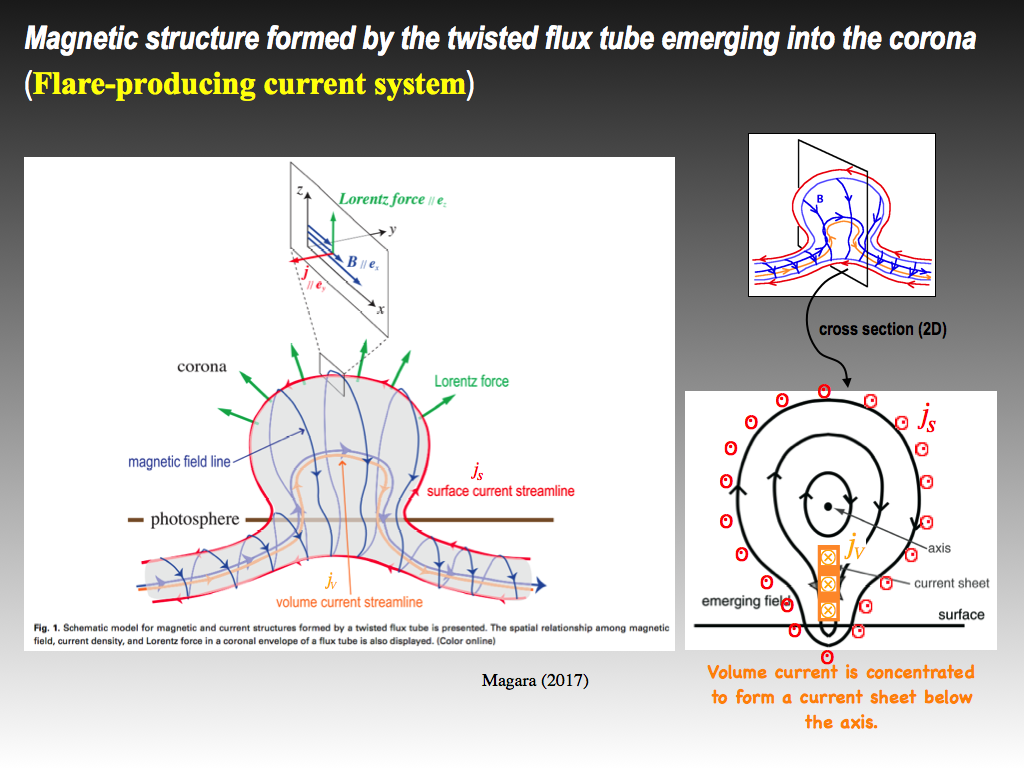
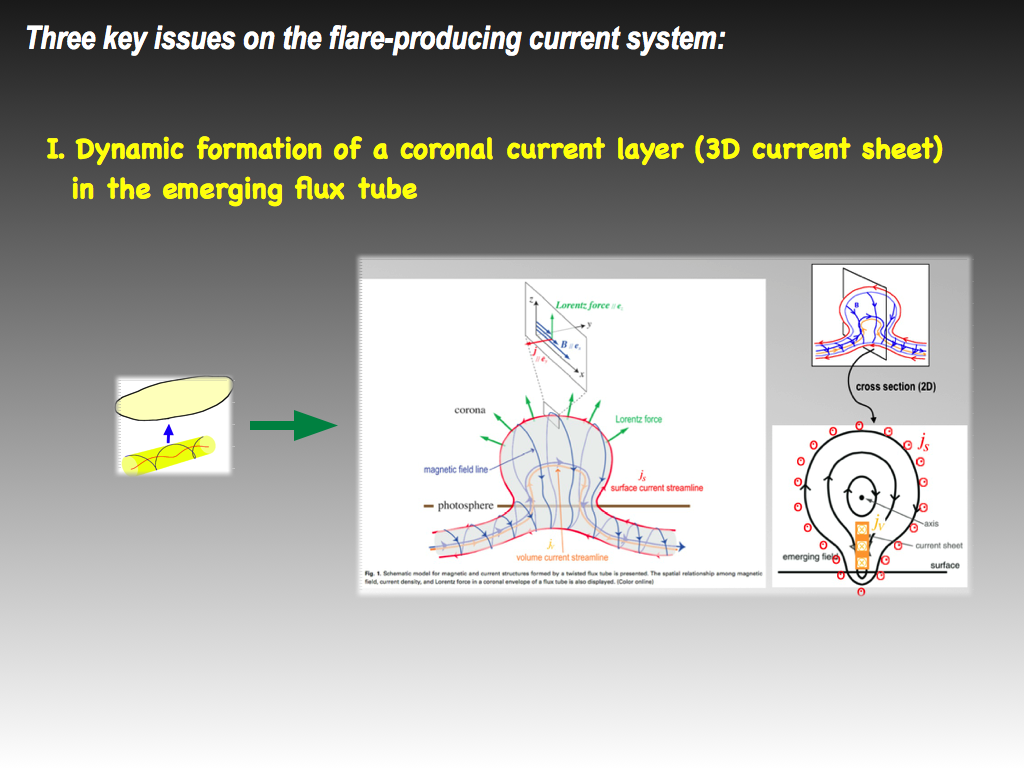
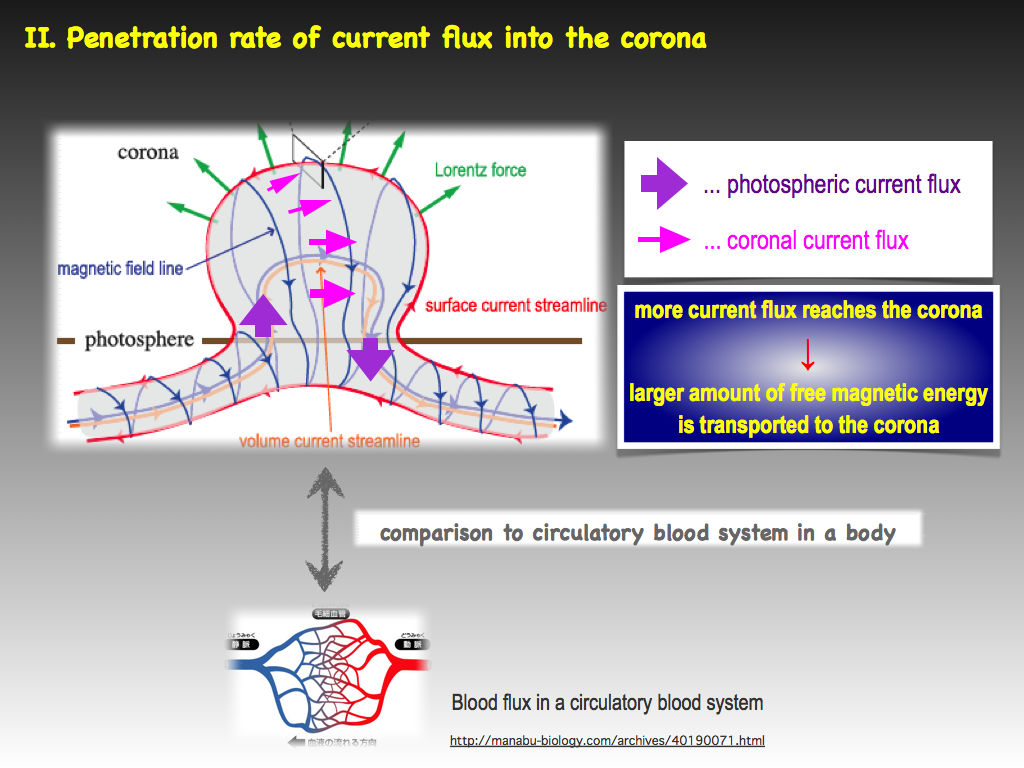
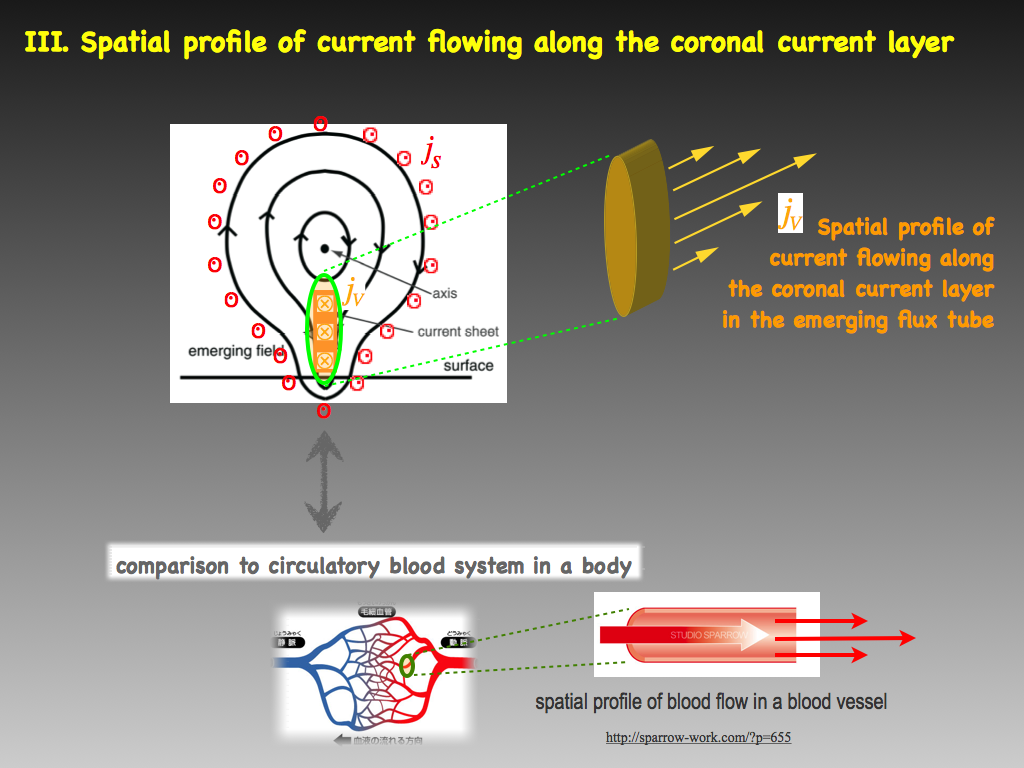
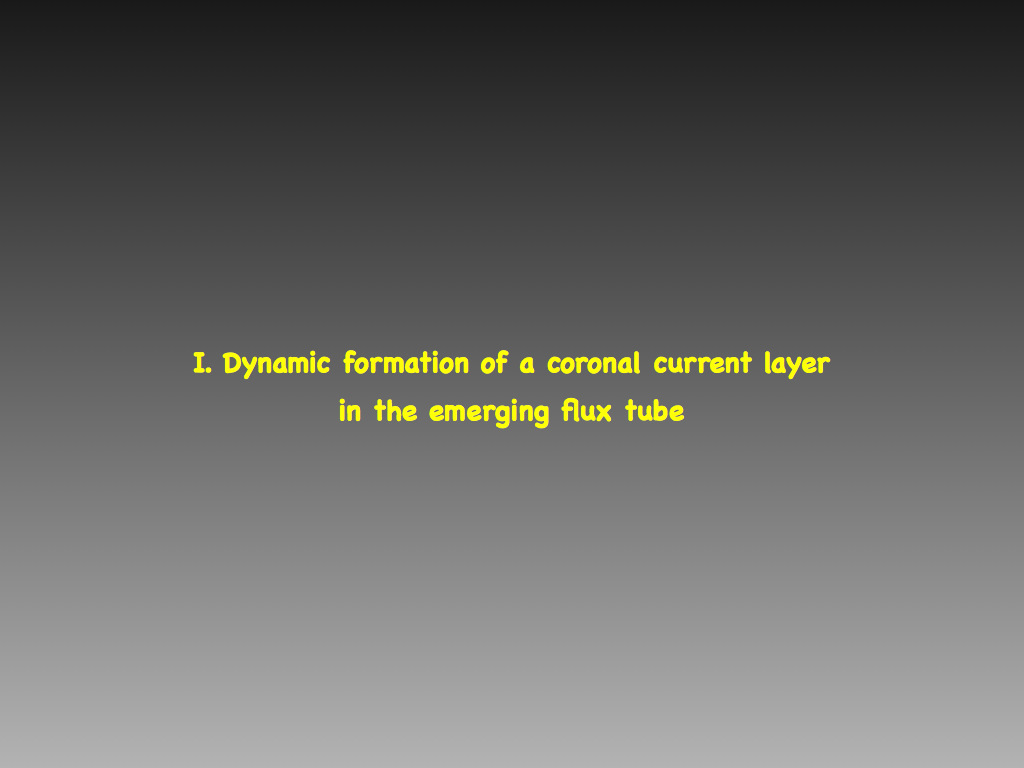
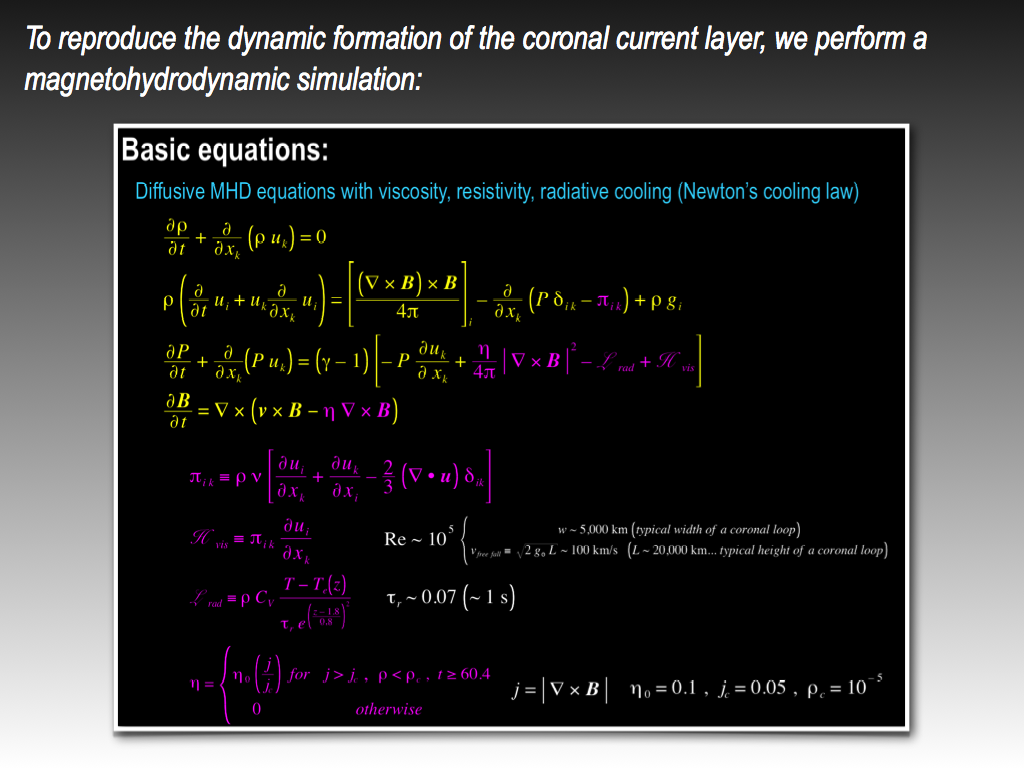
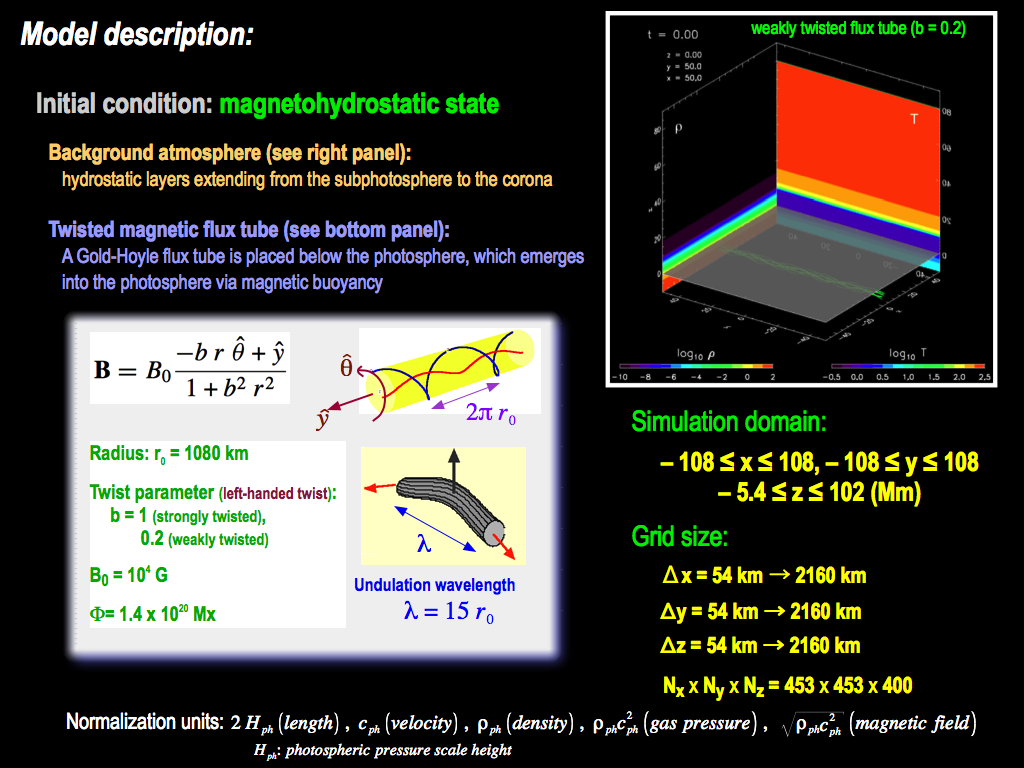
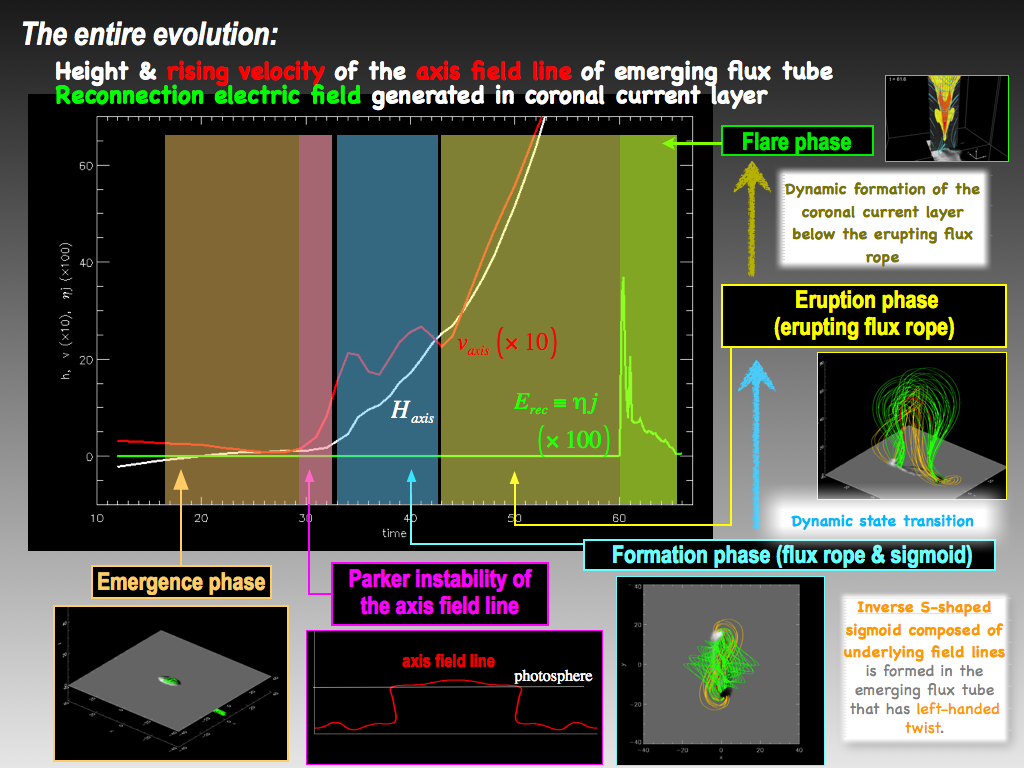

Close-up view
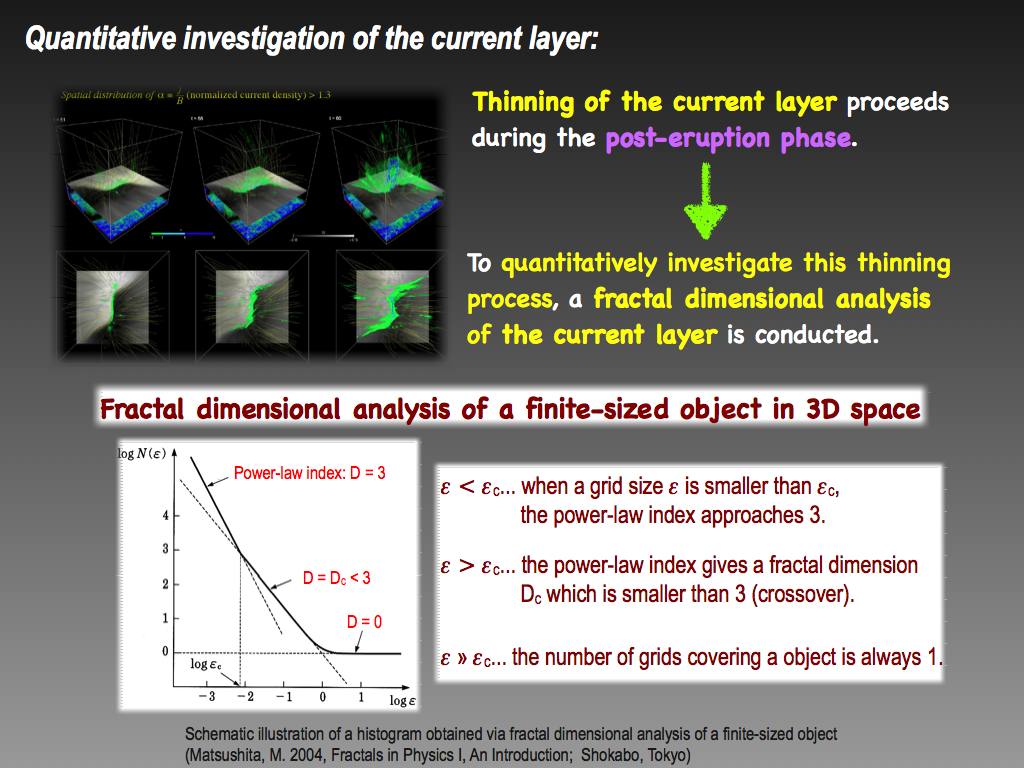
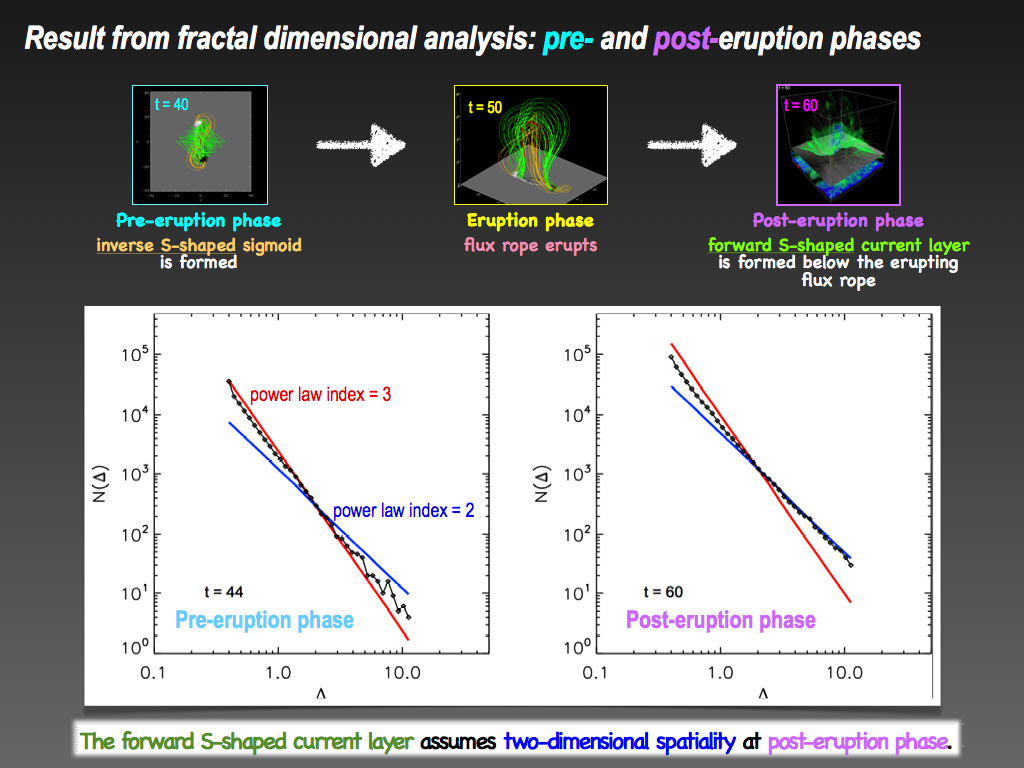

Close-up view
